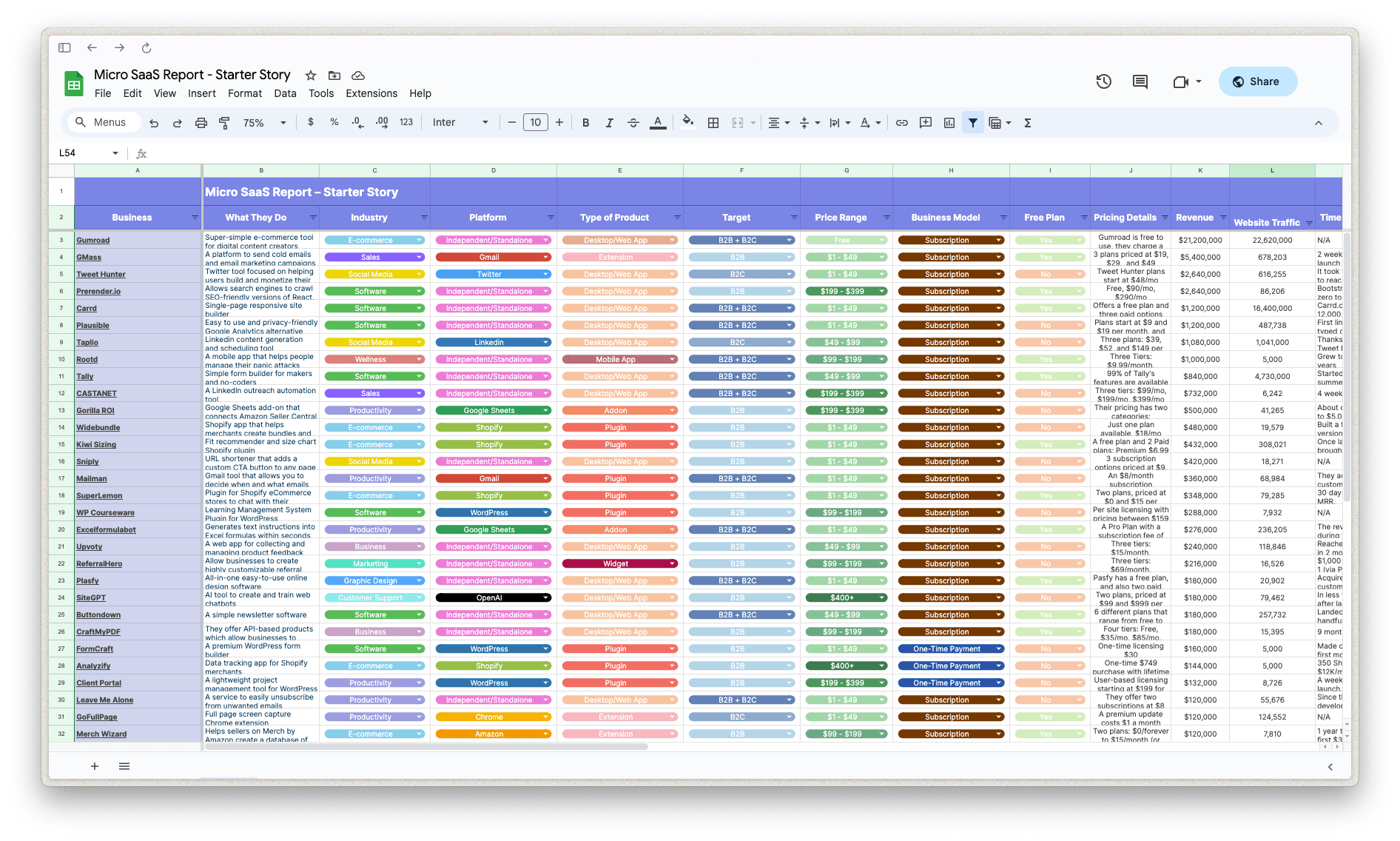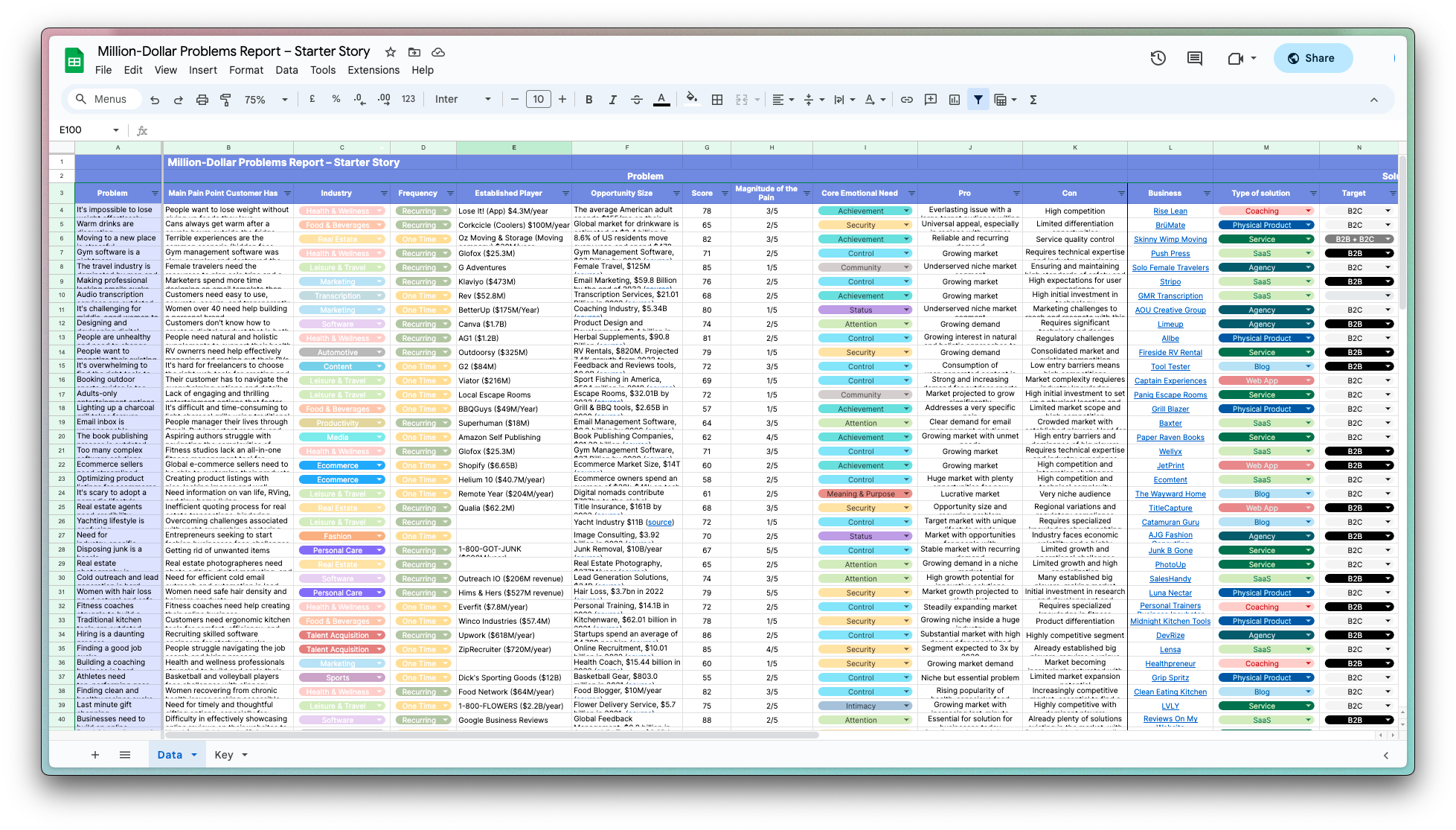
How Josh Luber Built Ghostwrite into a Thriving Collectible Toy Business
Who is Josh Luber?
Josh Luber, co-founder of StockX and Fanatics Collectibles, is a seasoned entrepreneur from the U.S. with a background in building brands at the intersection of culture and commerce. Educated with a focus on entrepreneurship, Luber's career is driven by his passion for collectibles.
What problem does Ghostwrite solve?
Ghostwrite solves the problem for collectors by offering limited edition toys that serve as a cultural blank canvas, allowing for unique collaborations and storytelling, which creates excitement and ensures long-term value for the buyer. By using a Blind Dutch Auction to determine pricing, it further engages collectors by letting them drive market value rather than setting a fixed price, adding to the thrill of acquiring something rare and culturally relevant.
How did Josh come up with the idea for Ghostwrite?
Josh Luber's idea for Ghostwrite came from his long-standing passion for collectibles and his experience with businesses like StockX and Fanatics Collectibles. As someone who grew up collecting trading cards and sneakers, Luber noticed that the collectible toy industry lacked the dominant players seen in other markets, offering a ripe opportunity for building something unique. While working at StockX, he saw the potential in collectible toys when the company quickly became a leader in selling Bearbrick toys. This was his "aha" moment — realizing that the same hype and cultural engagement found in sneakers and trading cards could be applied to toys.
Before fully diving into Ghostwrite, Luber conducted thorough research by leveraging insights from his previous ventures, looking at how supply and demand dynamics could enhance a product's value. He spent a year perfecting the concept, ensuring that Ghostwrite toys could serve as blank canvases for storytelling, much like popular collectibles had done in the past. This period involved substantial trial and error, including scrapping designs that couldn't capture the essence of a neutral and adaptable figure.
Feedback was essential, prompting adjustments along the way. Luber faced challenges in finding the right balance between creating a visually appealing toy and maintaining the adaptability of a blank canvas for stories. Through persistence and collaboration with designers, he refined the concept into something that could resonate with collectors interested in culture-driven narratives. The key lesson from Luber's journey was the importance of merging cultural relevance with business insights, tailoring a product to meet collectors' needs in an ever-evolving hype economy.
How did Josh Luber build the initial version of Ghostwrite?
The creation of Ghostwrite, a project led by Josh Luber, involved an intricate development process over 14 months, culminating in the design of a collectible toy known as a "ghost." To build this product, Luber and his team collaborated with 14 toy designers to achieve a design that served as a blank canvas for cultural stories without losing its distinctive shape. Prototyping presented challenges, including multiple iterations that were discarded, such as one design inspired by Luber’s daughter that still looked too much like a specific character rather than a generic ghost. The manufacturing process focused on creating a consistent silhouette that could be adapted for different cultural collaborations, with features like clear packaging for easy display and NFC chips for authentication—reflecting Luber’s deep understanding of collector preferences. Despite the complexities, the journey was driven by the goal of crafting a product that maximized storytelling potential and collector value.
What was the growth strategy for Ghostwrite and how did they scale?
Blind Dutch Auction
Ghostwrite implements a unique sales model called the Blind Dutch Auction, where the market determines the price of a collectible rather than setting a fixed retail price. This approach aligns with the collectible nature of their toys, helping gauge true demand and allowing the market to decide its value.
Why it worked: This model engages buyers by creating a sense of scarcity and urgency, tapping into the hype economy where supply and demand dictate value. It allows for price discovery, making buyers feel involved in setting the collectible’s worth, leading to greater customer satisfaction and ensuring products sell at market value.
Partnerships and Collaborations
Ghostwrite actively pursues collaborations with popular brands such as the NBA, WNBA, MLB, and others. These partnerships are designed to create exclusive, culturally relevant collectibles. By utilizing the "blank canvas collectible" concept, Ghostwrite can easily adapt toys to reflect different brands’ stories and aesthetics.
Why it worked: Collaborations provide credibility and visibility by aligning with established brands. This approach builds anticipation for each release, leveraging existing brand fan bases to create hype. The brand's ability to tell a variety of stories broadens its appeal across different audiences.
Strategic Use of Scarcity
The company uses limited edition releases as a core strategy to ensure that collectibles remain desirable and maintain their value over time. Each release is not only scarce but also comes with full transparency of how many items are produced, which adds to the allure.
Why it worked: This strategy effectively maintains high demand and resale value, making each collection a true collectible. By managing supply transparently and strategically releasing limited runs, Ghostwrite cultivates a sense of urgency and exclusivity, encouraging prompt purchases.
Integration with Secondary Market
Ghostwrite enhances its collectible strategy by partnering with StockX for the resale of their toys. This integration means that once a new release sells out on the Ghostwrite site, the products immediately become available on StockX.
Why it worked: Seamless integration with a secondary market platform like StockX not only boosts easy access to resale for buyers and sellers but also anchors the products' long-term value. This maintains collector interest and supports the notion of collectibles as investment assets.
What's the pricing strategy for Ghostwrite?
Ghostwrite employs a dynamic pricing strategy using a Blind Dutch Auction model, allowing market forces to determine pricing for their limited-edition collectibles, often beginning at around $417.
What were the biggest lessons learned from building Ghostwrite?
- Embrace Market-Based Pricing: Ghostwrite leverages a blind Dutch auction model allowing the market to set the price. This creates transparency and reflects true demand, preventing overproduction and maintaining the product's long-term value.
- Foster Strong Partnerships: Collaborating with notable brands and sports leagues like the NBA and MLB allows Ghostwrite to tap into established fan bases, creating culturally relevant collectibles and enhancing brand credibility.
- Create a Flexible Product Platform: By designing a blank canvas collectible, Ghostwrite provides a versatile platform for storytelling, enabling extensive creative collaborations while maintaining a unified brand identity.
- Prioritize Transparency and Authenticity: Ghostwrite embeds NFC chips in products for easy authenticity verification and communicates clear production numbers, ensuring consumer trust and supporting the product's collectible nature.
- Learn from Industry Trends: By applying insights from sneakers and trading cards, Ghostwrite adapts successful strategies like scarcity and collectibility to elevate toys to similar cultural relevance.
Discover Similar Business Ideas Like Ghostwrite
|
|
Idea
|
Revenue
|
|---|---|---|
|
Mouse Book Club
|
Pocket-sized classic books for digital minimalists.
|
$10K
monthly
|
More about Ghostwrite:
Who is the owner of Ghostwrite?
Josh Luber is the founder of Ghostwrite.
When did Josh Luber start Ghostwrite?
2022
What is Josh Luber's net worth?
Josh Luber's business makes an average of $/month.
How much money has Josh Luber made from Ghostwrite?
Josh Luber started the business in 2022, and currently makes an average of .

Download the report and join our email newsletter packed with business ideas and money-making opportunities, backed by real-life case studies.

Download the report and join our email newsletter packed with business ideas and money-making opportunities, backed by real-life case studies.

Download the report and join our email newsletter packed with business ideas and money-making opportunities, backed by real-life case studies.

Download the report and join our email newsletter packed with business ideas and money-making opportunities, backed by real-life case studies.

Download the report and join our email newsletter packed with business ideas and money-making opportunities, backed by real-life case studies.

Download the report and join our email newsletter packed with business ideas and money-making opportunities, backed by real-life case studies.

Download the report and join our email newsletter packed with business ideas and money-making opportunities, backed by real-life case studies.

Download the report and join our email newsletter packed with business ideas and money-making opportunities, backed by real-life case studies.









